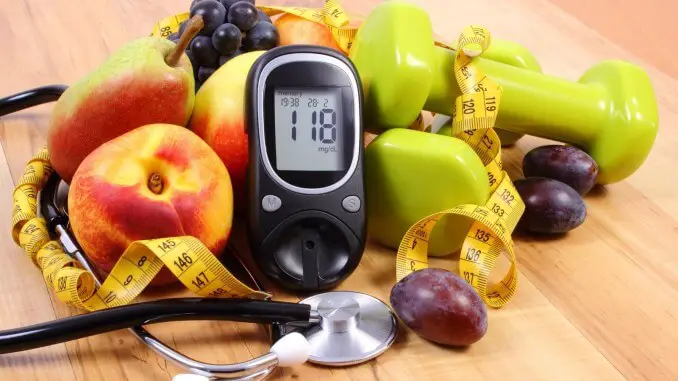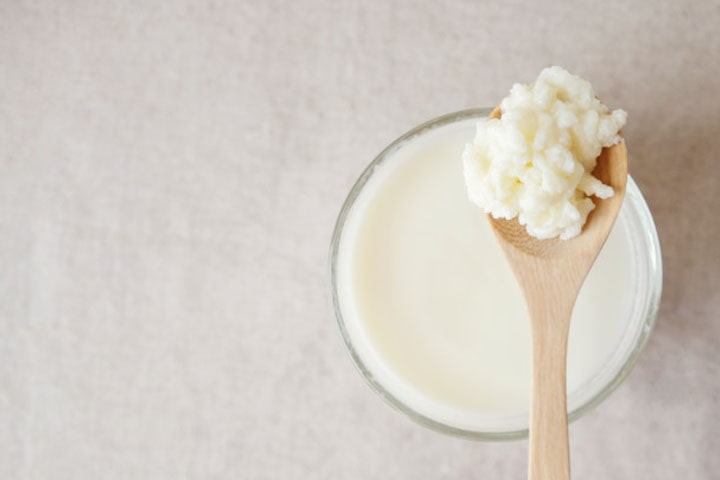Welcome to the world of the Autoimmune Protocol (AIP)!
Whether you’ve been just diagnosed with an autoimmune condition or are exploring ways to improve your health naturally, the AIP diet is a powerful tool for healing your body through nutrition.
By focusing on whole, nutrient-dense, anti-inflammatory foods and eliminating potential triggers, the AIP diet can reduce inflammation, support the immune system, and promote overall well-being.
In this guide, we’ll walk you through all the stages of the AIP diet – how it works, why, and practical tips to help you get started on your journey to optimal health.
Are you ready to embark on a transformative journey of healing?
Let’s begin!
What is the AIP Diet?
The AIP diet, also known as the Autoimmune Paleo diet, is a natural therapeutic dietary approach specifically designed to help individuals dealing with autoimmune diseases.
What are autoimmune diseases?
Think of conditions like rheumatoid arthritis, lupus, Hashimoto’s thyroiditis, inflammatory bowel disease (IBD), and Celiac disease, just to name a few.
These conditions arise when the immune system mistakenly attacks healthy tissues in the body, leading to inflammation and a variety of negative symptoms.
The AIP diet builds on the principles of the Paleolithic (Paleo) diet but takes it a step further by focusing on foods that reduce inflammation, heal the gut, and support the immune system.
By eliminating specific foods and food groups that can trigger inflammation and immune excitation, the AIP diet is able to promote healing and restore optimal immune function.
How Does the AIP Diet Work?

The AIP diet is implemented in three main phases: the Elimination Phase, the Reintroduction Phase, and the Maintenance Phase.
1. Elimination Phase
During this phase, certain foods that are known to trigger inflammation and immune responses are completely removed from the diet.
This phase typically lasts 30-90 days, depending on the person’s severity of symptoms and overall state of health.
Foods to avoid during the elimination phase include:
• Grains and Pseudo-Grains: Rice, wheat, oats, barley, rye, buckwheat, quinoa, etc., and foods derived from them, such as pasta, bread, and breakfast cereals.
• Legumes: Lentils, beans, peas, peanuts, and foods derived from them, such as tofu, tempeh, mock meats, or peanut butter.
• Nightshade Vegetables: Eggplants, peppers, potatoes, tomatoes, tomatillos, and spices derived from nightshades like paprika, chili powder, cayenne pepper, red pepper flakes, and curry powder.
• Eggs: Whole eggs, egg whites, or foods containing ingredients derived from eggs.
• Dairy: Cow’s, goat’s, or sheep’s milk, and byproducts derived from these milks, such as cream, cheese, butter, or ghee.
This also includes dairy-based protein powders (i.e., whey protein, casein protein, milk protein powder), or other dairy-related supplements (i.e., colostrum).
• Nuts and Seeds: All nuts and seeds and foods derived from them, such as nut and seed flours, butter, or oils.
This also includes cocoa and seed-based spices like coriander, cumin, anise, fennel, fenugreek, mustard, and nutmeg.
• Certain Beverages: Alcohol, coffee, energy drinks, and soda (including sugar-free soda).
• Processed Vegetable Oils: Canola, rapeseed, corn, cottonseed, palm kernel, safflower, soybean, or sunflower oils.
• Refined or Processed Sugars: Cane or beet sugar, corn syrup, brown rice syrup, and barley malt syrup.
This also includes sweets, soda, candy, frozen desserts, and chocolate containing these ingredients.
• Artificial Sweeteners: Stevia, aspartame, sucralose, acesulfame K, mannitol, and xylitol.
• Food Additives and Thickeners: Nitrates, nitrites, monosodium glutamate (MSG), soy protein isolate, trans fats, food colorings, emulsifiers, gums, and thickeners (i.e., xanthan gum, guar gum, carrageenan, etc.).
Additional Restrictions
Some AIP variations also recommend moderating the intake of salt, saturated fats, omega-6 fats, natural sugars like raw honey or maple syrup, and coconut products.
Other AIP variations suggest avoiding all fruit during the elimination phase, while others allow up to 10–40 grams of fructose per day (around 1–2 portions of fruit).
Additionally, certain AIP protocols recommend avoiding algae like spirulina or chlorella.
These additional restrictions aim to reduce inflammation and support gut health even further, in order to ensure better results.
More specifically:
1. Moderating Salt Intake: Excessive salt intake can contribute to water retention, electrolyte imbalances, and inflammation in some individuals, so moderating it can be beneficial in certain situations.
2. Saturated and Omega-6 Fats: Both saturated fats (SFAs) and omega-6 fats, when consumed in excess, can promote inflammation.
Some AIP variations suggest moderation or avoidance of food sources high in these fats to help minimize inflammation levels.
3. Natural Sugars like Raw Honey or Maple Syrup: While these simple sugars are ‘natural’, they can still contribute to blood sugar spikes, which can exacerbate metabolic imbalances, electrolyte issues, and inflammation.
Some AIP variations recommend limiting these natural sweeteners to help stabilize blood sugar levels and support metabolic health.
4. Coconut Products: Some individuals have sensitivities or allergies to coconut and coconut-based products, so certain AIP protocols recommend avoiding them to prevent negative reactions.
Coconut, while generally considered a ‘health food’, does contain certain nutritional components that might irritate some people’s digestive systems.
5. Avoiding All Fruit or Limiting Fructose: Fruit contains fructose, and while fructose is a natural simple sugar (monosaccharide), excessive fructose intake can contribute to metabolic problems and other health issues.
Some AIP variations recommend avoiding fruit altogether during the elimination phase, while others allow small amounts to be consumed but within certain fructose limits (around 10–40 grams of fructose per day).
6. Avoiding Algae like Spirulina or Chlorella: While algae like spirulina and chlorella are nutrient-rich “superfoods,” they can stimulate the immune system in some individuals, exacerbating autoimmune symptoms.
Thus, certain AIP protocols advise against their consumption.
These additional restrictions aim to support the main goals and objectives of the AIP diet, which include reducing inflammation, supporting gut health, and identifying potential food triggers that may be contributing to immune dysregulation.
Elimination Phase Tips
During the elimination phase, focus on consuming only nutrient-dense whole foods such as:
• Vegetables: A variety of vegetables except for nightshade vegetables (i.e., tomatoes, eggplants, potatoes, peppers, etc.) and algae (i.e., spirulina, chlorella).
• Fresh Fruit: A variety of fresh fruit (in moderation).
• Tubers: Sweet potatoes, taro, yams, Jerusalem or Chinese artichokes.
• Minimally Processed Meat: Red meat, poultry, fish, seafood, organ meats (offal). Choose organic, hormone-free, wild-caught, grass-fed, or pasture-raised whenever possible.
• Fermented, Probiotic-Rich Foods: Non-dairy-based fermented foods like kombucha, sauerkraut, pickles, and coconut yogurt/kefir.
• Minimally Processed Plant-Based Oils: Olive oil, avocado oil, or coconut oil.
• Herbs and Spices: As long as they’re not derived from a seed. Common examples include cumin, turmeric (double-check to ensure no nightshade blend), garlic, ginger, cinnamon, clove, basil, oregano, thyme, and rosemary.
• Vinegars: Balsamic, apple cider, and red wine vinegar, as long as they’re free of added sugars (in moderation).
• Natural Sweeteners: Maple syrup and raw honey (in moderation).
• Certain Teas: Green and black tea (up to 3–4 cups per day). Due to their caffeine content, it’s generally advised to drink them earlier in the day to prevent sleep disturbances.
• Bone Broth: Usually from chicken, beef, lamb, pork, or fish.
2. Reintroduction Phase
After a period of strict elimination (typically 30 – 90 days), foods are gradually reintroduced one at a time.
This helps identify specific triggers of autoimmune symptoms and assess individual tolerances.
Foods are reintroduced in stages, starting with those least likely to cause reactions and progressing to more potentially reactive foods.
The Reintroduction Phase looks like:
Stage 1 Reintroductions:
• Egg yolks (not the whites): Chicken, duck, goose, quail, or any other type of egg yolk.
• Legumes (beans with edible pods and legume sprouts): Green beans, peas, runner beans, snow peas, sugar snap peas.
• Fruit and berry-based spices: Allspice, star anise, caraway, cardamom pod, juniper, pepper (black, green, pink, or white peppercorns), sumac.
• Seed-based spices: Anise seed, annatto seed, black caraway (Russian caraway, black cumin), celery seed, coriander seed, cumin seed, dill seed, fennel seed, fenugreek, mustard, nutmeg.
• Nuts and seeds (oils only): Macadamia, sesame, walnut.
• Nuts and seeds: Chocolate, cocoa, coffee (occasional basis).
• Dairy: Ghee.
Stage 2 Reintroductions:
• Nuts and seeds: Almonds, Brazil nuts, chestnuts, coffee (daily basis), hazelnuts, macadamia nuts, pecans, pine nuts, pistachios, walnuts, chia, flax, hemp seeds, poppy, pumpkin seed, sesame, sunflower, or any other flavors, flours, butters, oils, and other products derived from them.
• Egg whites (or whole eggs): Chicken, duck, goose, quail, or any other type of egg white.
• Dairy: Butter, butter oil.
• Alcohol (small quantities): Gluten-free beer or hard cider (8 oz. or less), wine (5 oz. or less), fortified wine (3 oz. or less), liqueur (3 oz. or less), or spirits (1 oz. or less).
Stage 3 Reintroductions:
• Nightshades (limited): Paprika, and potatoes (peeled).
• Dairy: Buttermilk, cheese, cottage cheese, cream cheese, milk, curds, dairy-protein isolates, heavy cream, kefir, sour cream, ice cream, whey, whey protein isolate, whipping cream, yogurt. (Grass-fed, fermented, or A2 dairy may be better tolerated).
• Legumes: Chickpeas (a.k.a. garbanzo beans), lentils, and split peas. (Legumes may be more well tolerated when soaked and/or fermented).
Stage 4 Reintroductions:
• Nightshades and/or spices derived from them: Ashwagandha, bell peppers (a.k.a. sweet peppers), cayenne peppers, cape gooseberries (a.k.a. ground cherries), eggplant, garden huckleberries, goji berries (a.k.a. wolfberries), hot peppers (chili peppers and chili-based spices), naranjillas, pepinos, pimentos, potatoes, tamarillos, tomatillos, and tomatoes.
• Gluten-free grains, pseudo-grains, and other grain-like substances: Corn, fonio, Job’s tears, kamut, millet, oats, rice, sorghum, spelt, teff, wild rice, amaranth, buckwheat, and quinoa.
• Legumes: Adzuki beans, black beans, black-eyed peas, butter beans, calico beans, cannellini beans, fava beans, Great Northern beans, Italian beans, kidney beans, lima beans, mung beans, navy beans, pinto beans, peanuts.
• Alcohol (moderate quantities): GF beer or hard cider, wine, fortified wine, liqueur, or spirits.
3. Maintenance Phase
Once you’ve identified which foods trigger and exacerbate your symptoms, and which foods your body tolerates well, it’s time to enter the maintenance phase.
This phase is about finding a sustainable way of eating that keeps your symptoms at bay, while making you feel good mentally, physically, and emotionally, and supporting your overall health and wellness.
During the maintenance phase, you continue to avoid foods that may cause autoimmune flare-ups, and enjoy a variety of tasty and nutritious AIP-compliant foods.
The goal is to maintain the dietary habits that have helped you reduce inflammation in your body and improve your symptoms, while making adjustments from time to time as needed based on your body’s responses and needs.
AIP (Autoimmune Protocol) Food List

Foods to Enjoy on the AIP Diet
• Meat: Both red and white meat, with a preference for organic, hormone-free, and grass-fed/finished options to maximize nutrient density and minimize exposure to hormones, veterinary drugs, pesticide residues, and antibiotics.
• Wild-Caught Fish and Seafood: Rich in omega-3 fatty acids (EPA and DHA), which have anti-inflammatory and immunoregulatory properties.
• Organ Meats: Nutrient-dense options like liver, spleen, heart, brain, and kidney, which provide essential vitamins, minerals, trace elements, enzymes, and other bioactive compounds.
• Vegetables: A wide variety of vegetables, except for nightshades, to ensure a broad spectrum of micronutrients, enzymes, antioxidants, and phytonutrients.
• Sweet Potatoes: Nutrient-dense starchy vegetable that provides micronutrients, complex carbohydrates, dietary fiber, and is easy on the digestive system.
• Low-Sugar Fruits: Such as wild berries, which are high in antioxidants, phytonutrients, enzymes, and micronutrients, and low in sugar, making them a great option for satisfying sweet cravings without spiking blood sugar levels.
• Coconut Products: Including coconut water, coconut milk, coconut butter, coconut flour, and coconut oil, which offer healthy fats and are versatile for cooking and baking.
• Avocado and Olives: Both are rich in healthy monounsaturated fats (MUFAs) and provide a good source of fiber, antioxidants, and various micronutrients.
• Healthy Fats: Like extra virgin olive oil (EVOO), avocado oil, beef tallow, lard, and duck fat, which are stable at high temperatures and help with the absorption of fat-soluble vitamins (A, D, E, K), while supporting endocrine/hormone health.
• Herbs and Spices: Such as basil, ginger, and turmeric, which add flavor and have anti-inflammatory and antioxidant properties.
• Dairy-Free Fermented Foods: Like sauerkraut and coconut milk yogurt/kefir, which support gut health through beneficial microorganisms (probiotics).
Take care of your body. It’s the only place you have to live.
Foods to Avoid on the AIP Diet
To reduce inflammation and promote healing, the AIP diet strictly excludes the following foods:
• Grains: All grains, including pseudo-grains like quinoa and buckwheat, since they can contribute to inflammation and digestive issues.
• Dairy: All forms of dairy, including butter and ghee (regardless if they are low in casein), which can provoke an immune response in sensitive individuals.
• Eggs: Both egg whites and yolks, which can be allergenic and trigger autoimmune reactions.
• Nuts and Seeds: Including all forms and products derived from them (i.e., nut and seed butters), as they can be inflammatory and cause digestive issues.
• Legumes and Beans: Such as lentils, beans, peas, and peanuts, which contain anti-nutrients (i.e., lectins, phytic acid, etc.) that can irritate the gut and stimulate the immune system.
• Nightshade Vegetables: Including tomatoes, eggplants, peppers, and Irsh/white potatoes, which contain alkaloids (i.e., solanine), lectins, and other compounds like capsaicin, that can irritate the gut and exacerbate inflammation.
• Sugars and Artificial Sweeteners: Including refined sugars, high-fructose corn syrup (HFCS), and artificial sweeteners like aspartame (i.e., Nutrasweet®, Equal®, Sugar Twin®), sucralose (i.e., Splenda®), and acesulfame K (i.e., Sunett®, Sweet One®), which can disrupt gut function, metabolic health, and spike inflammation.
• Certain Spices: Those derived from seeds or nightshades, such as paprika, cayenne, and cumin, which can irritate the gut and trigger immune responses.
• Cocoa and Coffee: Both are derived from a bean and should be excluded, including their byproducts (i.e., cocoa powder), as they can stimulate the immune system and lead to autoimmune flare-ups for certain individuals.
Lifestyle Factors

The AIP goes beyond just food. It acknowledges the powerful connection between lifestyle and your overall health, particularly in managing autoimmune conditions.
Here are some key lifestyle factors to consider for a holistic approach to healing:
1. Stress Management
Chronic stress can exacerbate gut permeability (a.k.a. leaky gut), inflammation, and immune dysregulation.
For best results, while following the AIP diet, try to practice stress-reducing techniques, such as:
• Meditation: Mindfulness practices can help you detach from worries and cultivate inner peace. There are many guided meditations available online and through apps.
• Yoga: By combining physical postures, breathing exercises, and meditation, yoga promotes relaxation and stress reduction.
• Deep Breathing: Take slow, controlled breaths to activate your body’s relaxation/parasympathetic response.
2. Adequate Sleep
Aim for 6-8 hours of quality sleep each night. A consistent sleep schedule helps regulate hormones and allows your body to repair and recharge. Healing is challenging if you can’t sleep well. Here are some tips:
• Establish a relaxing bedtime routine.
• Create a sleep-conducive environment – cool, dark, and quiet.
• Limit screen time before bed.
• Avoid caffeine and alcohol in the evening
3. Hydration
Proper hydration is crucial for many bodily functions, including metabolism, neuromuscular function, detoxification, and supporting gut health.
Aim to drink plenty of water along with electrolytes throughout the day. Here are some smart ways to stay on track with your hydration:
• Invest in a reusable glass water bottle and carry it with you.
• Set reminders on your phone to drink water.
• Flavor your water with sliced fruits, AIP-compliant herbs, or cucumbers for a refreshing twist.
• Add electrolytes to your water for more efficient hydration.
Water follows electrolytes in the body (especially sodium and potassium) due to osmotic forces.
Water can’t enter cells and provide intracellular hydration without electrolytes.
4. Physical Fitness
Moderate physical activity helps manage inflammation, improves mood, and boosts overall well-being. Choose activities you enjoy, such as:
• Walking, hiking, or biking outdoors.
• Swimming or gentle water aerobics.
• Yoga or Pilates.
• Strength training with bodyweight exercises or light weights.
Remember, consistency is key. Start with small changes and gradually integrate these practices into your daily routine.
You’ll be surprised by the positive impact they can have on your journey towards optimal health and wellness.
Getting Started with the AIP Diet

Starting the AIP diet can seem daunting, but breaking it down into manageable steps can help:
1. Create an AIP-Friendly Kitchen
Make space for the good stuff! Remove all non-compliant items like grains, legumes, dairy, nightshades, processed foods, and sugary drinks.
Donate what you can or toss expired items.
Fill your pantry and fridge with AIP-approved options, like:
• Fresh meats, fish, and seafood.
• A rainbow of vegetables (except nightshades for now).
• Sweet potatoes and winter squashes.
• Low-sugar fruits like berries and tart apples/pears.
• Healthy fats, like olive oil, avocado oil, coconut oil, beef tallow, lard, duck fat.
• Herbs and spices for added flavor.
• Fermented foods, like sauerkraut and coconut milk kefir/yogurt (if tolerated).
2. Plan Your Meals for Success
Planning your meals ahead of time is key to staying on track.
Use cookbooks, online resources, or create your own meal plans with a variety of AIP-compliant options.
Consider prepping chopped vegetables, cooking protein in bulk, or preparing breakfast options in advance to save time during the week.
Plan healthy and satisfying AIP-friendly snacks to avoid reaching for processed options when hunger strikes.
Think sliced veggies with olive oil and salt, kale chips, plantain chips, liver chips, or pork rinds.
Having these snacks ready will help you stay committed to your AIP journey and ensure you always have a nutritious and tasty option on hand.
3. Become a Body Detective
Keeping a food journal is an invaluable tool.
Record what you eat and drink each day, along with any symptoms you may experience.
Over time, you’ll be able to identify potential food triggers and personalize your AIP journey even more for better results.
Need help or guidance with your AIP healing journey? Book a FREE consultation!
4. Knowledge is Power
The more you understand about the AIP diet and its principles, the more empowered you’ll feel.
Explore reliable resources like books, websites, and articles written by qualified healthcare professionals, registered dieticians, or nutrition experts.
5. Connect and Support
Connect with online communities or local support groups focused on the AIP diet and autoimmune conditions.
Sharing experiences, asking questions, and receiving encouragement from others who understand your journey can be a valuable source of motivation and support.
6. Embrace Patience and Progress
There is no quick fix to autoimmune healing, and everyone’s journey is unique.
Focus on progress, not perfection. Celebrate small wins and be patient with yourself.
Remember, consistency is key!
By following these steps and cultivating a positive mindset, you’ll be well on your way to experiencing the amazing benefits of the AIP diet and taking charge of your health.
Summary
The AIP diet is a powerful tool for managing autoimmune conditions through food and lifestyle changes.
By focusing on whole, nutrient-dense, anti-inflammatory foods and eliminating potential triggers, you can support your immune system and promote overall healing.
Remember, the AIP diet is not just about food – lifestyle changes also play a crucial role in your healing journey.
Welcome to the path of healing through food and lifestyle, and may your journey be one of improved health, reduced symptoms, and renewed vitality.
Stay patient, listen to your body, and embrace the positive changes that come with nurturing yourself from the inside out!
P.S. If you haven’t already, you may check out our Recommendations List for high-quality health products and services you can trust. There is probably nothing health-related you won’t find there + special discounts are waiting for you.
You May Also Like
References
[1] https://autoimmune.org/resource-center/about-autoimmunity/
[2] https://www.ncbi.nlm.nih.gov/books/NBK576418/
[3] https://www.ncbi.nlm.nih.gov/books/NBK459437/
[4] https://www.ncbi.nlm.nih.gov/pmc/articles/PMC10171171/
[5] https://www.ncbi.nlm.nih.gov/pmc/articles/PMC9918670/
[6] https://www.ncbi.nlm.nih.gov/pmc/articles/PMC1566249/
[7] https://www.ncbi.nlm.nih.gov/pmc/articles/PMC9369164/
[8] https://www.ncbi.nlm.nih.gov/pmc/articles/PMC7292717/
[9] https://www.ncbi.nlm.nih.gov/books/NBK235671/
[10] https://www.ncbi.nlm.nih.gov/pmc/articles/PMC3328995/
[11] https://pubmed.ncbi.nlm.nih.gov/36446151/
[12] https://www.ncbi.nlm.nih.gov/pmc/articles/PMC3523489/
[13] https://www.ncbi.nlm.nih.gov/pmc/articles/PMC9862683/
[14] https://www.ncbi.nlm.nih.gov/pmc/articles/PMC6790068/
[15] https://www.ncbi.nlm.nih.gov/pmc/articles/PMC9028931/
[16] https://www.ncbi.nlm.nih.gov/pmc/articles/PMC8305009/
[17] https://www.ncbi.nlm.nih.gov/pmc/articles/PMC10084985/
[18] https://www.ncbi.nlm.nih.gov/pmc/articles/PMC9628915/
[19] https://www.ncbi.nlm.nih.gov/pmc/articles/PMC8100306/
[20] https://pubmed.ncbi.nlm.nih.gov/34138767/
[21] https://pubmed.ncbi.nlm.nih.gov/31076401/
[22] https://pubmed.ncbi.nlm.nih.gov/29202198/
[23] https://pubmed.ncbi.nlm.nih.gov/34338776/
[24] https://www.ncbi.nlm.nih.gov/pmc/articles/PMC1773261/
[25] https://pubmed.ncbi.nlm.nih.gov/32752175/
[26] https://pubmed.ncbi.nlm.nih.gov/10419909/
[27] https://www.ncbi.nlm.nih.gov/pmc/articles/PMC3945069/
[28] https://pubmed.ncbi.nlm.nih.gov/11115792/
[29] https://www.ncbi.nlm.nih.gov/pmc/articles/PMC8620243/
[30] https://www.ncbi.nlm.nih.gov/pmc/articles/PMC8502778/
[31] https://www.ncbi.nlm.nih.gov/pmc/articles/PMC8197174/
[32] https://www.ncbi.nlm.nih.gov/pmc/articles/PMC4104257/
[33] https://pubmed.ncbi.nlm.nih.gov/26118769/
[34] https://pubmed.ncbi.nlm.nih.gov/16039550/
[35] https://www.ncbi.nlm.nih.gov/pmc/articles/PMC4036413/
[36] https://www.bmj.com/content/376/bmj-2021-066452
[37] https://www.ncbi.nlm.nih.gov/pmc/articles/mid/NIHMS889275/
[38] https://www.ncbi.nlm.nih.gov/pmc/articles/PMC10734970/
[39] https://www.ncbi.nlm.nih.gov/pmc/articles/PMC7147823/
[40] https://pubmed.ncbi.nlm.nih.gov/37772528/
[41] https://pubmed.ncbi.nlm.nih.gov/34836210/
[42] https://pubmed.ncbi.nlm.nih.gov/28858071/
[43] https://www.ncbi.nlm.nih.gov/pmc/articles/PMC6892563/
[44] https://www.ncbi.nlm.nih.gov/pmc/articles/PMC8620243/
[45] https://www.ncbi.nlm.nih.gov/pmc/articles/PMC9957574/
[46] https://www.ncbi.nlm.nih.gov/books/NBK482457/
[47] https://www.ncbi.nlm.nih.gov/pmc/articles/PMC8004139/
[48] https://www.ncbi.nlm.nih.gov/pmc/articles/PMC10574054/
[49] https://www.ncbi.nlm.nih.gov/pmc/articles/PMC4588744/
[50] https://nutritionsource.hsph.harvard.edu/healthy-weight/diet-reviews/paleo-diet/
Disclaimer
This content is for informational and educational purposes only. It is not intended to provide medical advice or to take the place of such advice or treatment from a personal physician. All readers/viewers of this content are advised to consult their doctors or qualified health professionals regarding specific health questions. Neither Metabolic Body nor the publisher of this content takes responsibility for possible health consequences of any person or persons reading or following the information in this educational content. All viewers of this content, especially those taking prescription or over-the-counter medications, should consult their physicians before beginning any nutrition, supplement, or lifestyle program.







